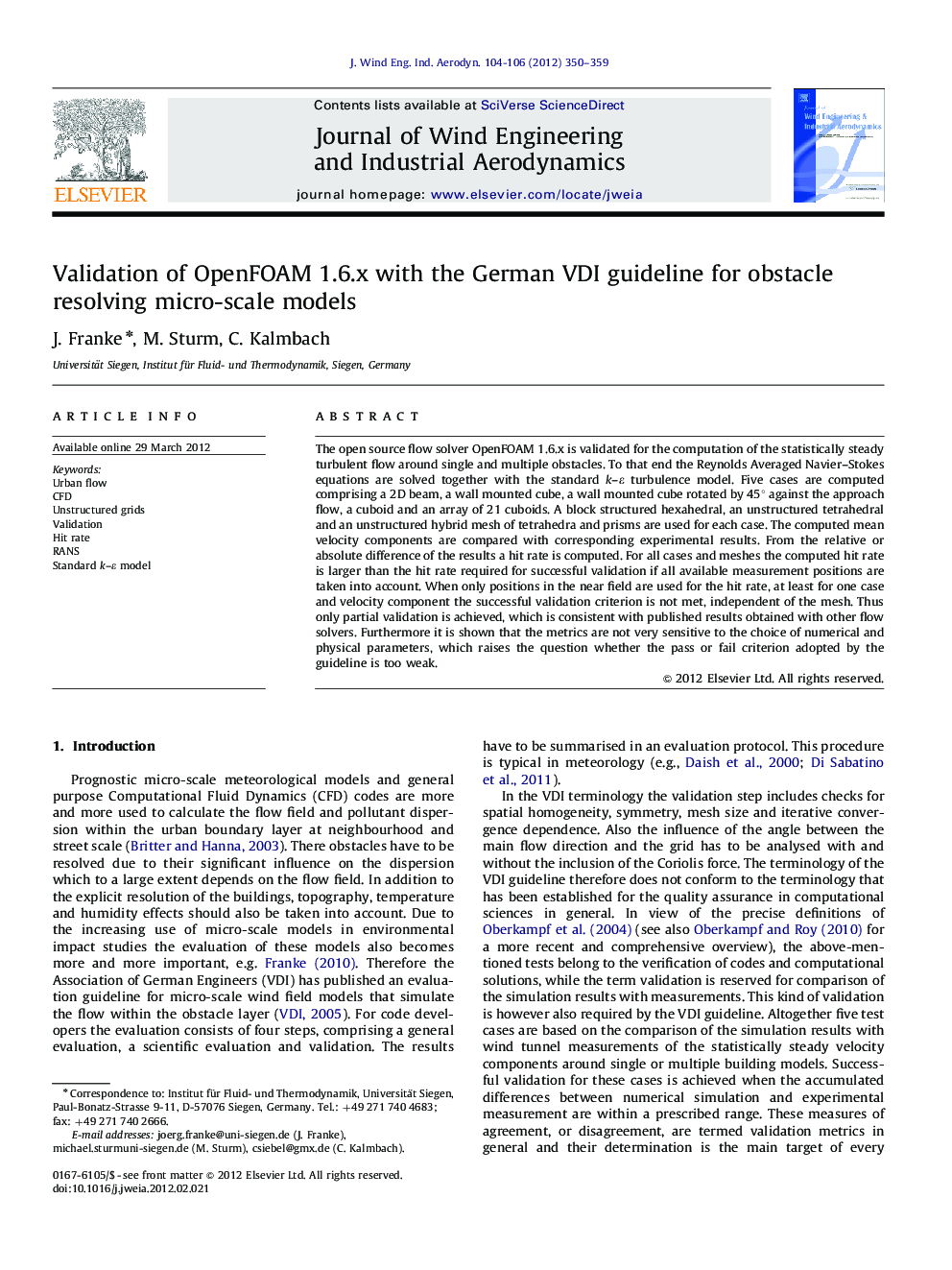| Article ID | Journal | Published Year | Pages | File Type |
|---|---|---|---|---|
| 293657 | Journal of Wind Engineering and Industrial Aerodynamics | 2012 | 10 Pages |
The open source flow solver OpenFOAM 1.6.x is validated for the computation of the statistically steady turbulent flow around single and multiple obstacles. To that end the Reynolds Averaged Navier–Stokes equations are solved together with the standard k–ε turbulence model. Five cases are computed comprising a 2D beam, a wall mounted cube, a wall mounted cube rotated by 45° against the approach flow, a cuboid and an array of 21 cuboids. A block structured hexahedral, an unstructured tetrahedral and an unstructured hybrid mesh of tetrahedra and prisms are used for each case. The computed mean velocity components are compared with corresponding experimental results. From the relative or absolute difference of the results a hit rate is computed. For all cases and meshes the computed hit rate is larger than the hit rate required for successful validation if all available measurement positions are taken into account. When only positions in the near field are used for the hit rate, at least for one case and velocity component the successful validation criterion is not met, independent of the mesh. Thus only partial validation is achieved, which is consistent with published results obtained with other flow solvers. Furthermore it is shown that the metrics are not very sensitive to the choice of numerical and physical parameters, which raises the question whether the pass or fail criterion adopted by the guideline is too weak.
► Validation of open source CFD software OpenFOAM for five test cases from the German standard. ► Direct comparison of OpenFOAM results with results of two commercial codes using identical grids. ► Examination of influence of purely tetrahedral and hybrid grids, including prisms, on OpenFOAM results. ► Demonstration that cell type with appropriate resolution has only a small influence on the results. ► Demonstration of the weak sensitivity of the German standard's criteria for successful validation.
